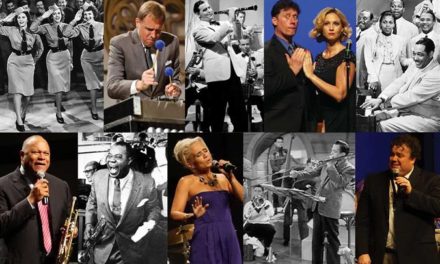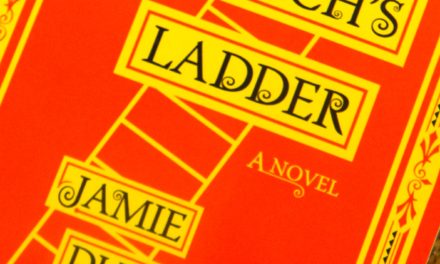(Above: Eugene Ballet Company’s Vivien Farrell plays Ophelia in the season opener, Stephen Mills’ Hamlet; photo by Aran “Ari” Denison)
By Rachael Carnes
An engaged and lively crowd erupted in applause throughout Eugene Ballet Company’s season opener, Hamlet.
(Side note: Is this a thing now? I thought we clapped at the curtain.)
Imported from Ballet Austin in Texas, and featuring choreography by Stephen Mills, Hamlet marks an intriguing direction for EBC, as the venerable company glissades into its 40th season.
Reframing one of the most famous plays in history in dance form, Mills’ Hamlet premiered in 2000. Since then, he has become something of a superstar, and with a number of re-imagined classics in his oeuvre, he’s earned the nickname “the bard of ballet.”
For almost 20 years, Mills’ Hamlet has been presented around the country.
This contemporary ballet’s selling points: An aesthetic that vacillates between bold, aggressive shaping and pretty pathways; some good old-fashioned fights; a few stabbings. And if that’s not enough to hold your attention, Mills explores madness, jealousy, and loss through movement at once muscular and lyrical. There’s something here for everybody.
Built on a foundation of music by Philip Glass, the piece is dark and moody. But what would we expect? This is Elsinore. Love is brief — a quick duet and it’s over. And Mills gives us not one Hamlet, but four: The Prince and his shadows, his internal tormentors, externalized.
Reed Souther in the title role confronts these inner demons ably, taking on Kenta Taniguchi, Koki Yamaguchi and Alessandro Angelini with sharp angles and changing levels.
In his most memorable movement moment, though, Prince Hamlet — upon seeing the ghost of his father in Act Two — curls up on his back, almost in a fetal positon. It’s a moment of complete helplessness.
Speaking of helpless, Ophelia, a winsome Vivien Farrell, is likewise surrounded by dreamlike specters — Yuki Beppu, Sarah Kosterman, and Erin Johnson — who illuminate Ophelia’s broken interior.
Danielle Tolmie, as Gertrude, projects grief and guilt all the way to the upper balcony. She’s allowed that, while the male characters feel more choreographically limited, uni-dimensional.
This is the danger zone of a contemporary story ballet. In modern dance, there’s boundless room to express emotion in the non-literal, in abstraction. Glass’s pulsing score seems to call for the unexpected, but I found myself predicting how many steps characters would take to walk across the stage.
Stephen Mills and Jeffrey A. Main’s sets deliver us to scenes in this unhappy castle, banked in Tony Tucci and Chad Jung’s exquisite lighting.
Ophelia’s death gives way to especially lovely theatricals — an onstage splashing pool that Ophelia dances in earns oohs and aahs (if you don’t compare it, as I did, to Alexander Ekman’s 2014 A Swan Lake, which covered the entire Oslo Opera stage in three inches of water).
When she’s suspended in the air, drowning, it’s sad and beautiful, using simple shifts in design to hook us in.
However, I wonder about the costumes. In 2018, Christopher McCollum’s designs — the too-big suits and trench coats — feel a little dated. Might be a good idea to retire them before the next commission.













That doesn’t look like Vivian but seems to be Victoria Harvey, who retired from EBC at the end of last season.
Photo taken last year for this year’s publicity
It seems odd that EBC would send a photo that wasn’t of the actual dancer. They didn’t ID it as someone else. I will have to check that out. Thanks!